This was an impulse buy when I visited Selfridges’ Fine Writing department fully intending just to have a look around. Having said that, I am very glad to have stumbled across this pen and have no “buyer’s remorse.”
Visitors to Selfridges’ pen area on the lower ground floor, will notice that it has diminished in size over the last few years, but still has an interesting range of high-end pens, including a good selection of Onoto for example, although the number of brands is reduced.
Having circled the island of attractive displays in the brightly lit glass counters, one looks along the row of displays in glass cabinets along the rear wall. Here I found a cabinet of Tibaldi pens, in various colours and moved in for a closer look. I might have moved on eventually, but the young lady assistant, Monshoor, timed her approach just right and asked if I needed any help. “Yes, help me to not buy any more pens” is what I might have said. Instead, something in my brain took over and said “Thank you, can I please have a look at that one?” and pointed to a fountain pen from the display of Tibaldi Infrangible (meaning “unbreakable”) pens. She unlocked the glass window and handed the pen to me.
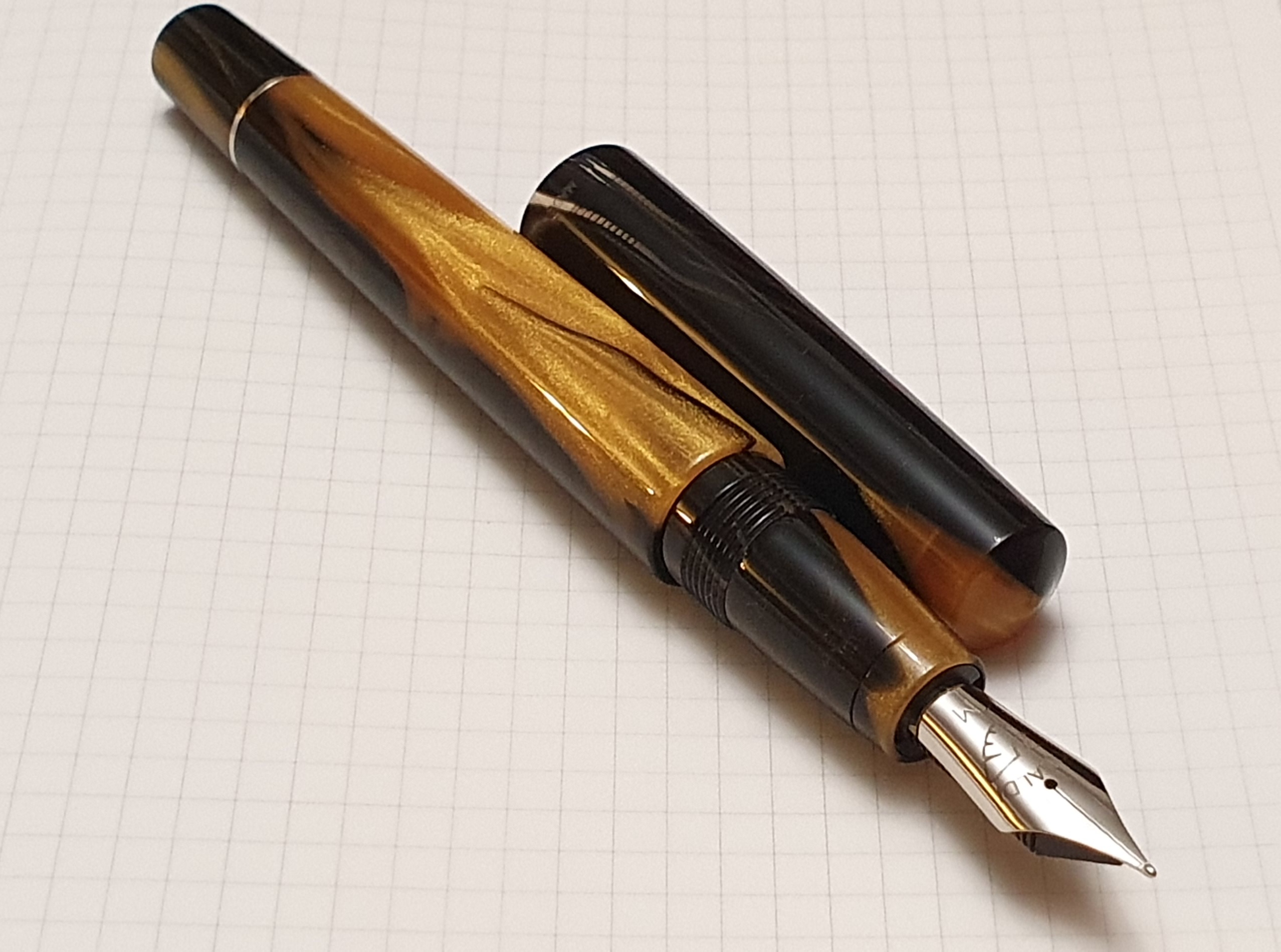
Here I should point out that most photos of this pen do not do it justice. Even getting it home and photographing it in my light box, the multiple tiny LEDs did not show off the material at its best. It really needs sunlight or a bright spotlamp.
There are ten colour options with this model. This particular version is, I think, called the Black Gold. I say “I think” because I have since seen a similar pen for sale on eBay but described as the “Chrome Yellow Special Edition.” Certainly there is a Chrome Yellow version, but according to photos on the official Tibaldi website, it has the patterned resins in the cap only, whereas the barrel and section are all black. I am not aware of any special editions. The Black Gold, on the other hand, has swirls of yellow in the cap, AND barrel and grip section. I read that they are formed of gold dust in the resin.
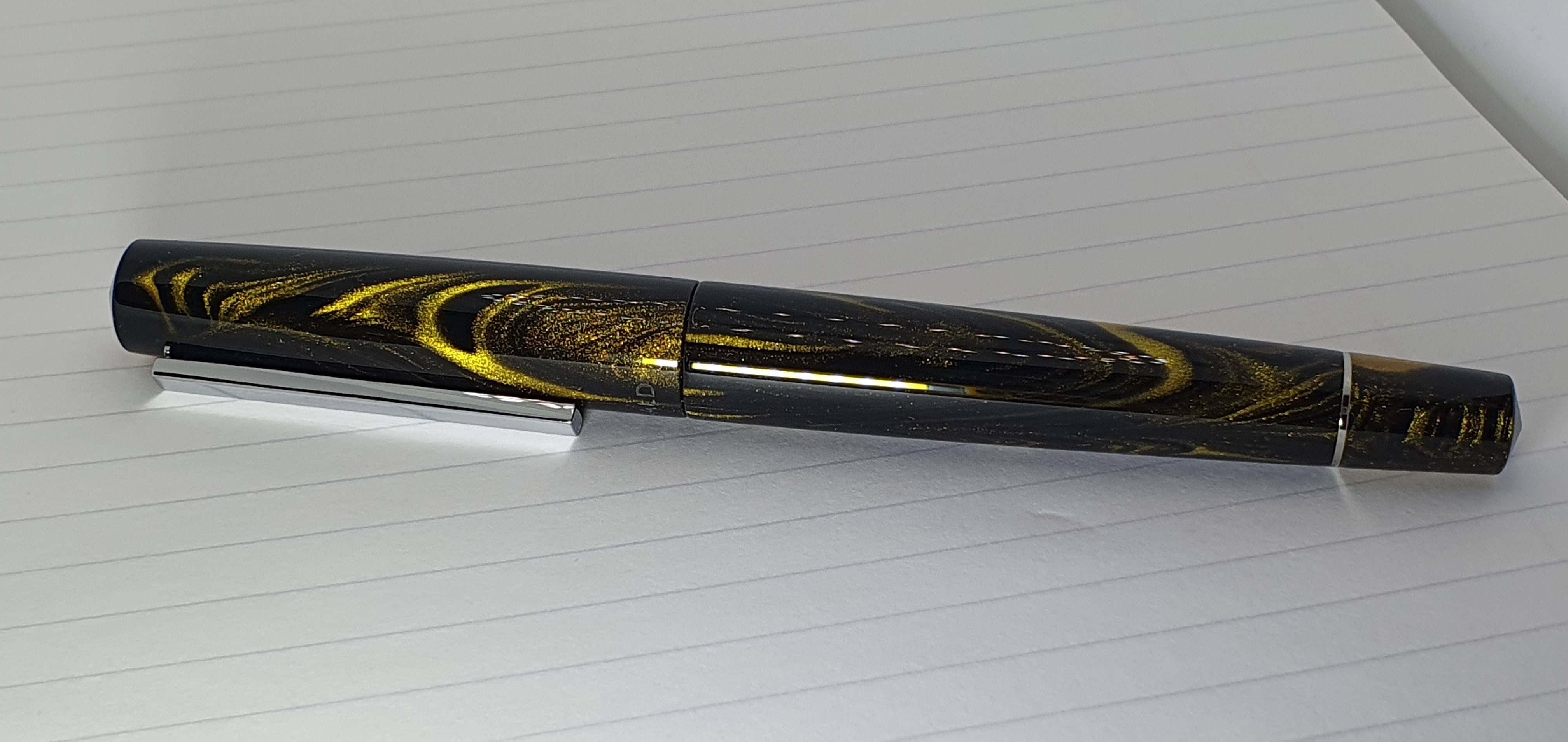
Anyway, whatever this version is called, I was smitten. Under the bright spotlamps in the shop, the coloured resins came alive with a brilliance as I turned the pen in my hands. Although it is the colours which initially catch your attention, the high quality of the resin in the hand is reassuring, polished and gleaming. The steel nib also looked immaculate. The nib is paired with an ebonite feed, a feature which I much appreciate, to improve ink flow and reduce hard-starts.
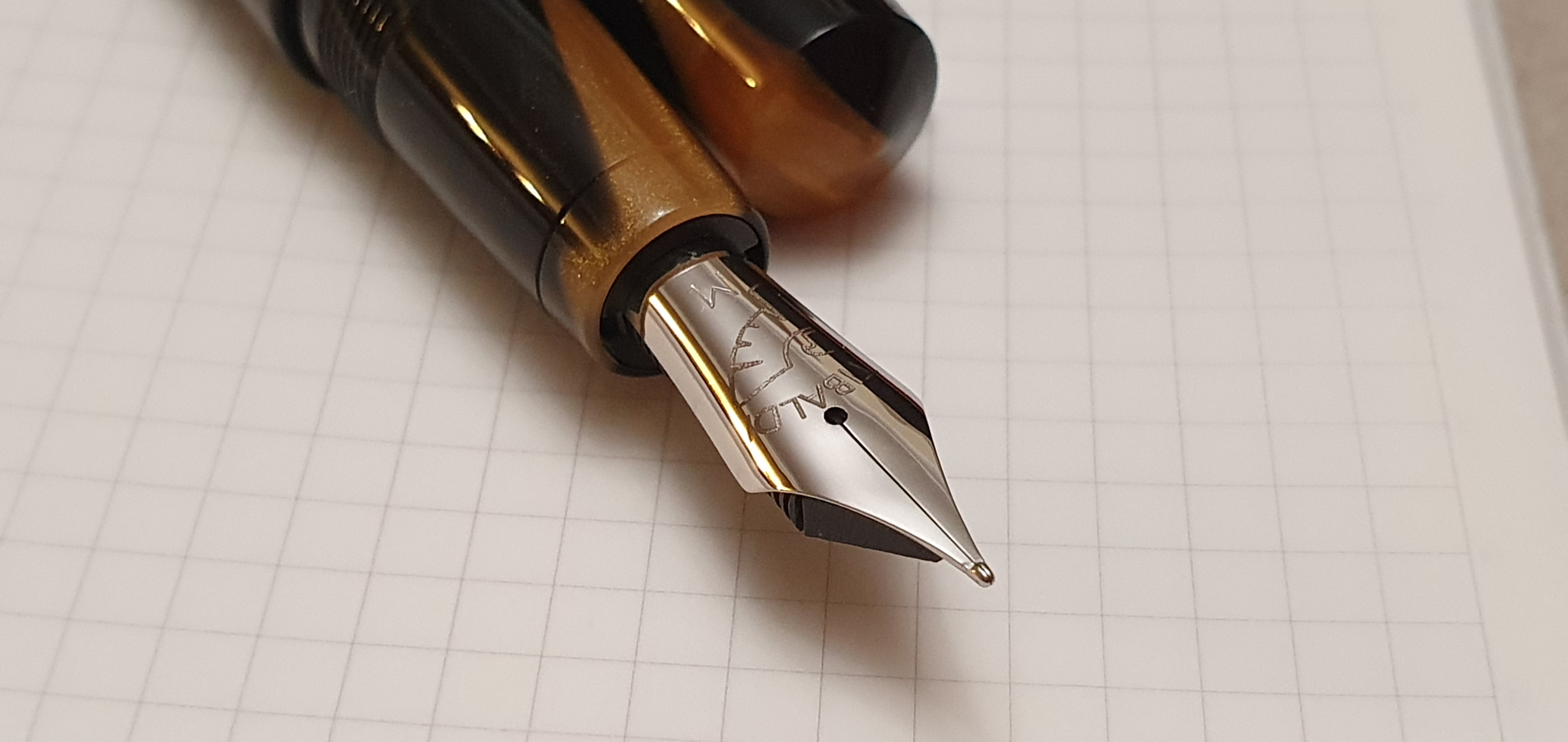
Having confirmed to Monshoor that I wished to buy the pen, she offered to get me another one in a box. Here, some care is needed as the patterns in the coloured resins on every pen are unique. This is a pen that really is best bought in a bricks and mortar shop where you can look closely at what you are buying.
I enjoyed being able to compare the display model with a similar one, but concluded that I preferred the distribution of colours in the display model that I had seen first and so that was the one that I took.
I had not yet tried writing with the pen, nor checked the nib other than a brief visual. Under my loupe, the nib was even more pleasing than I first thought and looked to be tuned just the way I like, with the nib slit narrowing towards the tip but still with the smallest of gaps, showing light between the tines at the tipping. The tipping was nicely rounded, polished and symmetrical and the tines were well aligned.
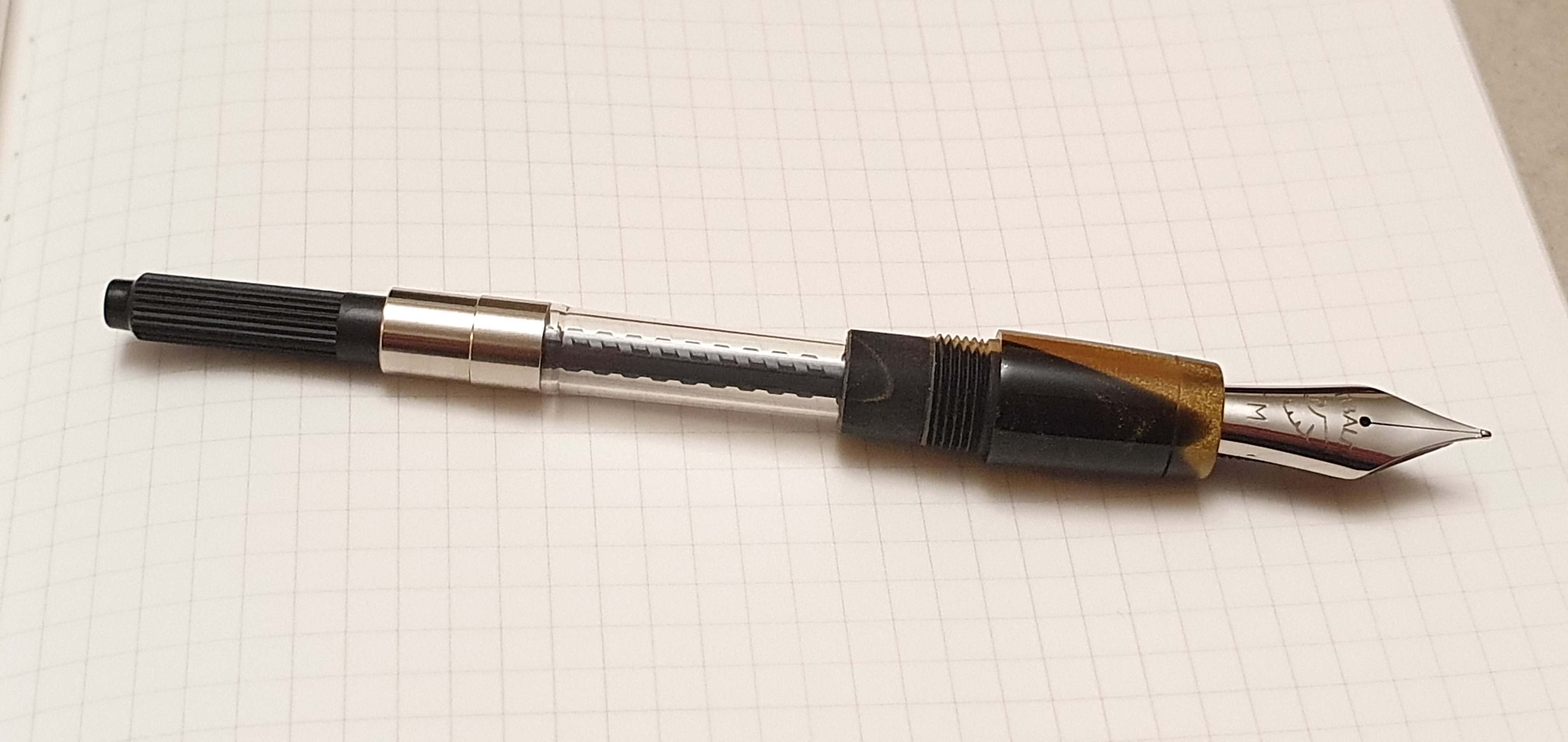
The pen came with a converter and a packet containing one black and one blue cartridge, of the standard international size. I flushed the nib and section and pondered what ink to use. Although I try most new pens first with Waterman Serenity Blue, I decided instead, quite rightly as it turns out, that the pen would like an Italian ink and filled it with Campo Marzio Tabacco, a rich dark brown that flows and shades well.
And so to the writing experience. The grip area is of generous girth. There are cap threads and a step at the barrel, to enable the cap to close flush with the body. You do feel these but I do not find them uncomfortable. The nib, as expected, wrote smoothly and with an ink flow that was neither too wet nor too dry. It should be noted that the nib is very firm.
Capping the pen: The cap unscrews with about one and a quarter turns. A useful tip is that when you have a pen with patterns in the cap and the barrel, it is nice to line them up (if you can), the same way every time. This pen has three entry points for the cap threads, giving you three choices for the position of the cap, in relation to the barrel. The way to take advantage of this is to hold the cap horizontal, with the clip at the top, or 12 o’clock position and then insert the pen with the nib also at the 12 o’clock position, into the cap until it touches the threads. Then turn the cap slowly, the wrong way until you hear the first click and then tighten the cap in the correct direction. Repeat, but with two clicks and then with three clicks and remember which of these gives you the best result.
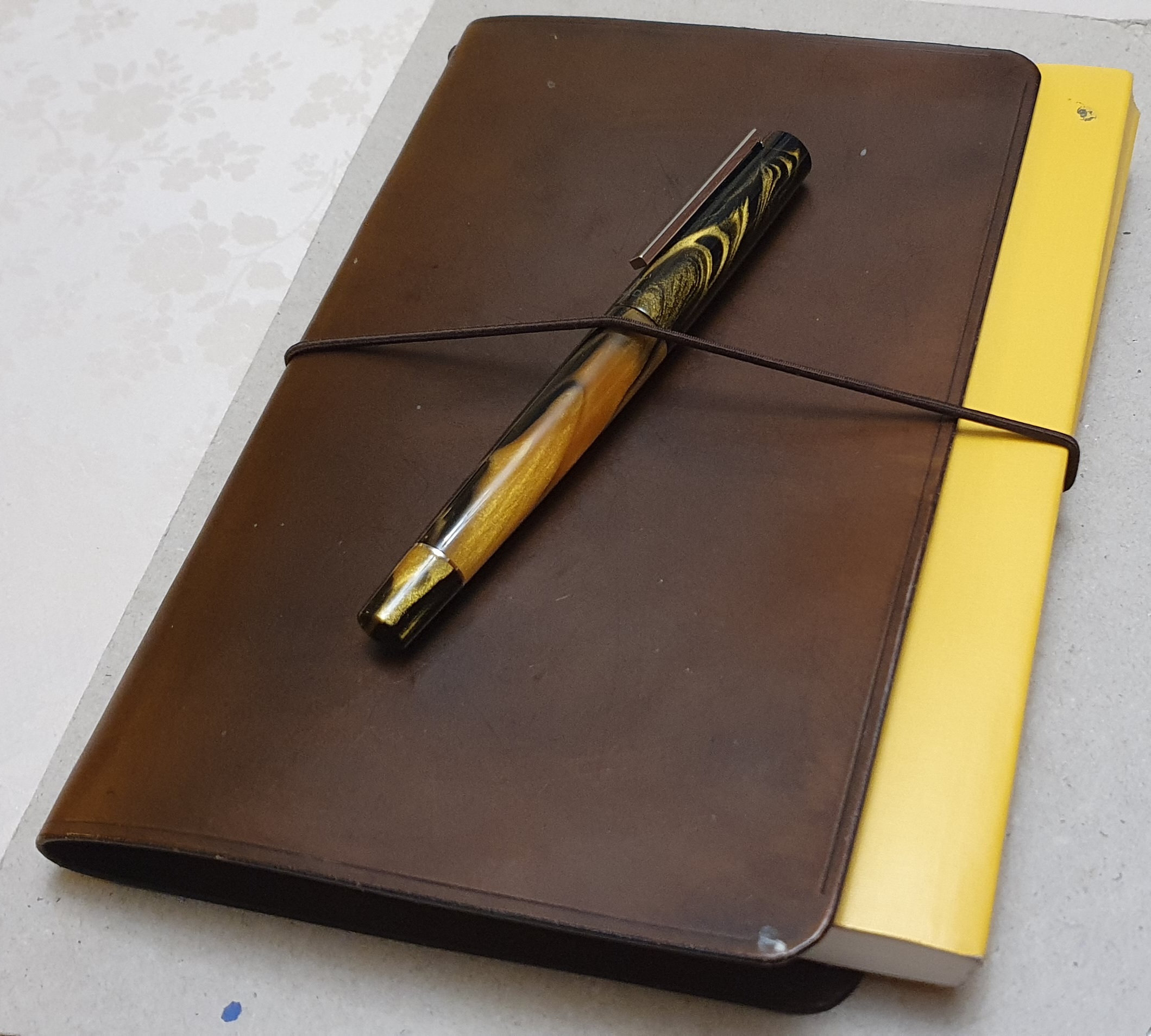
The cap has a steel pocket clip, notable for its absence of any adornment. It is simply a straight, rectangular bar and appears to be chrome plated. It is very stiff to raise and so would grip a pocket securely but would be hard to operate. The cap can be posted, quite securely and covering the barrel to about one half of the cap’s length, but the pen then becomes about 160mm long. The uncapped pen measures a comfortable length of 130mm and so I find no need to post the cap.
In the unlikely event of any problems arising, all Tibaldi products have a 24 months’ guarantee, against any manufacturing defect. The pen comes in a sturdy black cardboard box with a slide out tray and a dark orange paper outer sleeve. It is a nice box if you wish to keep it, whilst at the same time being a box that you could recycle without missing too much.
I am delighted with the pen. Features that I particularly enjoy are:
- beautiful autumn-leaf gold colours and distribution of contrasting colours in the resin;
- a joy to have and to hold, as well as to write with;
- comfortable to grip and of an ideal length unposted (for me);
- well made steel nib: smooth, with good ink flow but very stiff;
- three alignment options in capping the pen;
- converter included (as well as two cartridges to get you started);
- last but not least, an ebonite feed: a rare luxury for a pen at this price.
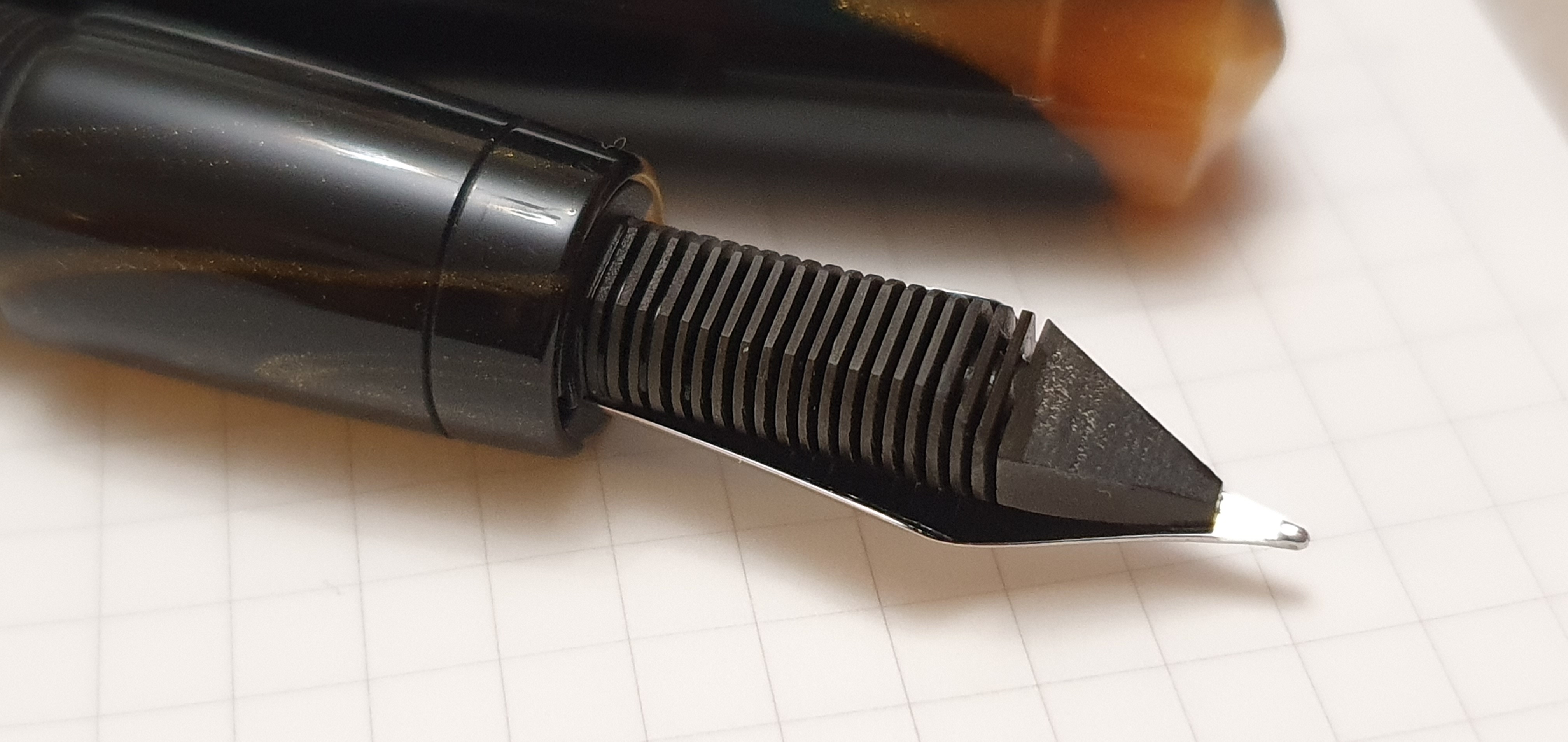
All in all, this looks and feels like a pen that you could use happily for hours on end and then simply gaze upon for a few hours more.
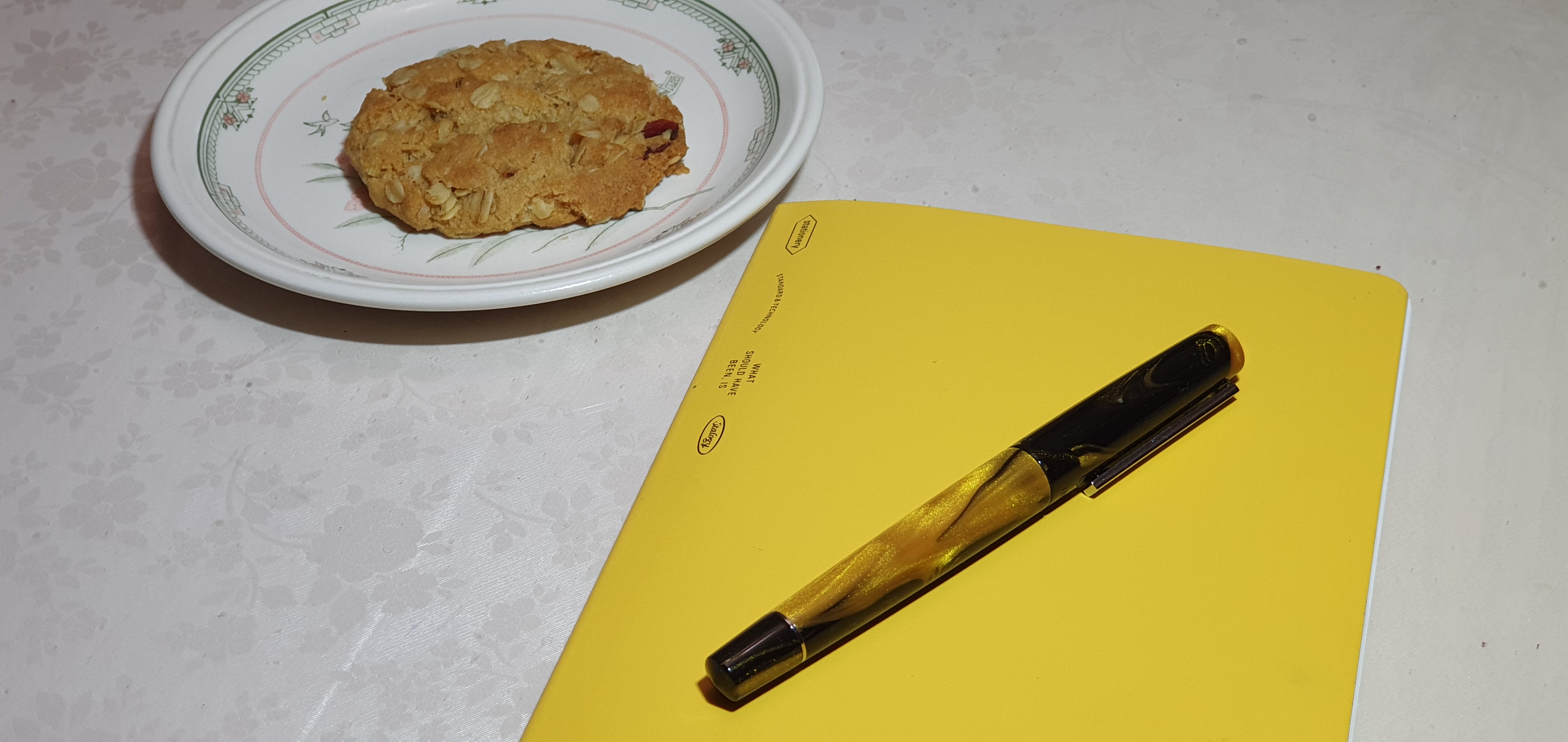

That is a very handsome pen. From your photos, and from your description, it seems like different light sources will bring out different elements of the material and there’s a bit of excitement in that – aways a fresh delight to see what today will bring. Another good, solid addition to your collection.
LikeLiked by 1 person
Thanks Pamela. The yellows do remind me of how trees look at this time of year, whilst the green-gold parabolic curves look like something from the cosmos. The material is a celebration of nature’s beauty. That’s a good excuse to buy a pen, if ever there was one. 🙂
LikeLike
Strangely enough, ‘handsome’ was the first adjective that popped into my mind, too. Congratulations on your purchase, Rupert. I enjoyed your description of the buying experience.
LikeLiked by 1 person
Thank you very much! I am glad to learn that you enjoyed reading about my visit to Selfridges! The background buying experience was integral to the story. Also without this a review can seem a bit like a specification sheet. 🙂
LikeLike
The present iteration of Tibaldi, like their predecessor in the ’90’s has some really well judged materials to my mind. Beautiful to behold and eye catching time after time but with enough maturity to be more than just frivolous. That seems to matter to me for some reason.
I have a modern Bononia in red/gold, and like you particularly like the ebonite feed and very high manufacturing tolerances. I took the perfectly good fine nib out of mine and fitted an 18k gold EF Tibaldi nib from a rather poorly 1996 Tibaldi pen. Despite the age discrepancy, I found the ebonite feed worked beautifully with the gold nib. Even though it’s a bit softer I can’t honestly say is writes any better than the supplied steel nib.
LikeLiked by 1 person
Thankyou. With ten colour options for the Infrangible, there is something for everyone…from glossy black to peacock tones.
It is great that you were able to transfer the 18k nib from your old Tibaldi, to the new one.
LikeLike
Great Catch Rupert. Absolutely stunning!
LikeLiked by 1 person
Many thanks Charles. This was a lucky find.
LikeLike
What a BEAUtiful pen. Based on your pictures and description, dependent on the time of day and ambient light, it is a different pen. A wonderful addition.
LikeLiked by 1 person
Thanks Danny! It is true: depending upon which side of the pen you are looking at, and how you have aligned the cap, and whether you have a bright light source, the images look like several different pens. It also starts up at once, thanks in part to the ebonite feed. It writes well and I think it is a good buy, so long as you are not put off by such a firm nib.
LikeLiked by 1 person
The price? Did I miss it?
LikeLiked by 1 person
No, you did not miss it. The price was £140.00 here in the UK.
LikeLike
Gimme that freshly-baked oatmeal cookie with cranberries!
LikeLiked by 1 person
Thanks so much! I had been looking at a black and gold Infrangibile for weeks online. Many Tibaldi pens are discounted now in the US, in May 2024. I had bought a lovely Infrangibile a few months ago, a medium nib, in the red, brown and black color swirls. I liked it so very much, I wanted another. The black gold looks very unexciting in most photos and is often the last one left in quantity on web stores. I found one photo that looked so different and lovely, then I found your beautifully written blog and photos here. I asked an online store to please find the one in their stock that had the most gold. He sent two photos and I loved it. He shipped the same day, so I will get it very soon. That is pensavings.com here in the US.
So thank you very much for your lovely post and photos. I hope to visit Selfridges pen department some day too.
LikeLiked by 1 person
Hi Paula. Thank you for your lovely comments on my blog. I am very glad to hear that this was a of help in steering you towards the black and gold version. Although you bought yours online, it is great that you thought to ask for the one with the most gold dust in the material and were able to see photos too. Good thinking!
I hope that you will enjoy it when it arrives. I recommend looking at the material under a bright light (such as the torch on a smartphone), while rotating the pen slowly!
Best wishes from London.
LikeLike